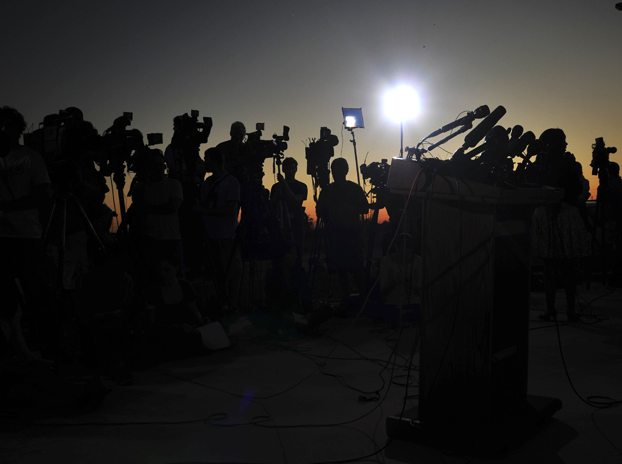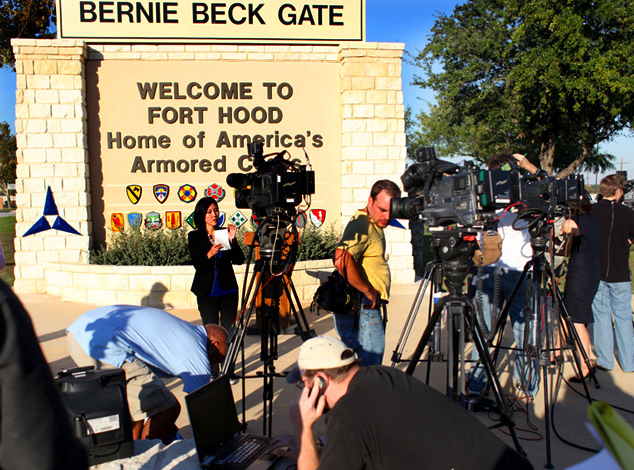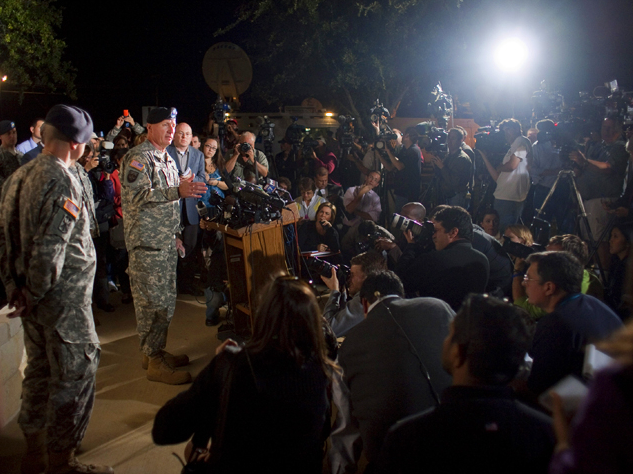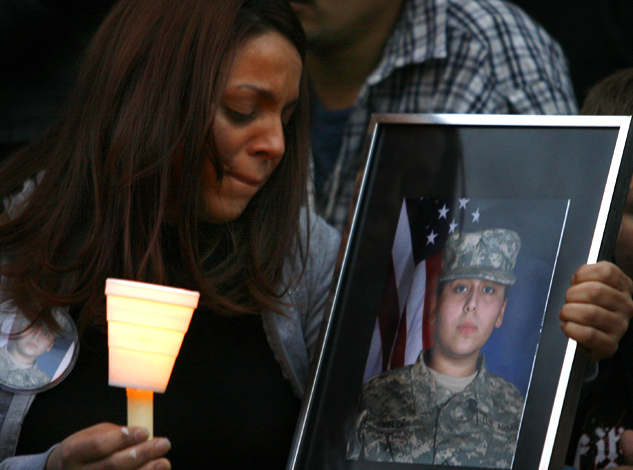
Screen capture of www.nbcdfw.com
Emily's post this past week
considers the ways in which many of the images of the shooting at Fort Hood
reflect a "conflicted understanding of this
event as both a military and a domestic tragedy." Her insightful
comments sent me searching through much of the photojournalism that
surrounds this recent tragedy and I found that many of the collections of slide
shows contain at least one, if not several, photographs of the media
documenting the aftermath of the event. Some of these photographs show the
media set against the setting sun while others focus on a key speaker
surrounded and almost swallowed by a sea of cameras and microphones.
While it is no surprise that, with the onslaught of the 24-hour news
cycle and the need for news, the media likes to focus on the impact of the media, I wonder whether we
might see these images of image-making as more than just meta?

Screen capture of www.nbcdfw.com
These photographs of the photographing emphasize what we might call the "newsworthiness" of the event. The prevalence of so many photographs of the media documenting the tragedy leads to a feedback loop in which the event is depicted as worthy of being documented simply because so many people are documenting it. This is not to suggest that the Fort Hood shootings were not a significant event nor am I intending to diminish the tragedy. Rather, I am interested in thinking through why these images of image-making appear during the documenting of a tragedy but not, for instance, within the photo-essays documenting the New York marathon or a second tour of duty in Afghanistan.

Screen capture of www.nbcdfw.com
Perhaps these photographs of the media at work are meant to allay anxiety that the media is capitalizing on a tragedy and transforming it into spectacle. I suppose, actually, that we could read these images in multiple ways: the image of the swarm of photographers suggests that the media frenzy may be building the event into a spectacle. Or, conversely, the image of the many photographers may suggest that the recent event is so significant that it requires extensive documentation. In a paper she gave at the GLASA conference on visual culture, Elisabeth Ross argued that media coverage of the recent political campaigns has tended to include images of image-making much like these documenting the Fort Hood shootings. In many ways these images make a claim to truth by laying bare their constructed nature--images of image-making show us the man behind the curtain.

Screen capture of www.nbcdfw.com
These photographs of the photographers at work document the media's role in and relation to the event but there is another trend running through these photographic slide shows. Many of the collections also privilege photographs of people holding photographs of victims of the Fort Hood shooting. While the images of image-making may suggest that this tragedy is being documented so that we will remember this one day in the future, the images of family members holding photographs may suggest the memories of an entire life lived and lost on this one day.
Recent comments
2 years 29 weeks ago
2 years 44 weeks ago
2 years 44 weeks ago
2 years 50 weeks ago
3 years 4 weeks ago
3 years 4 weeks ago
3 years 4 weeks ago
3 years 6 weeks ago
3 years 6 weeks ago
3 years 6 weeks ago